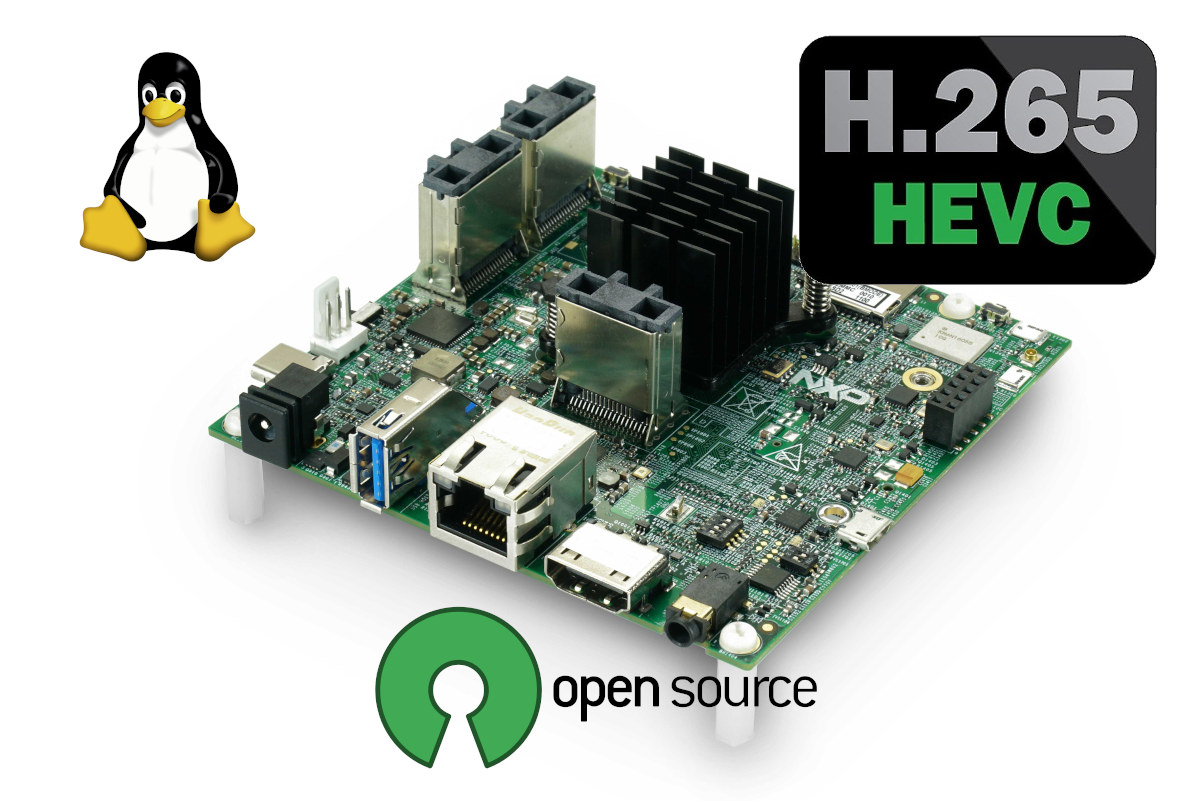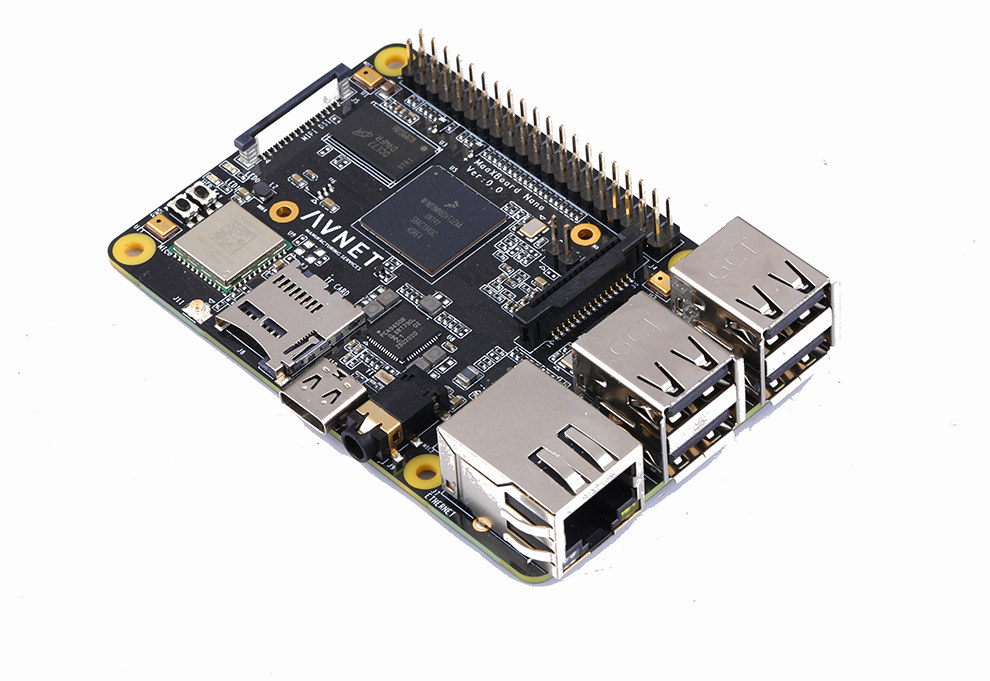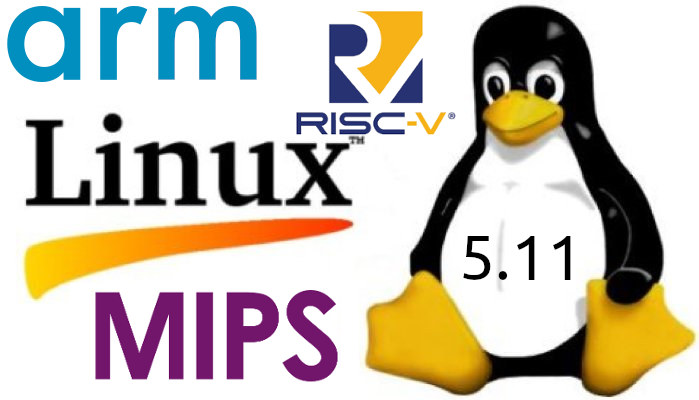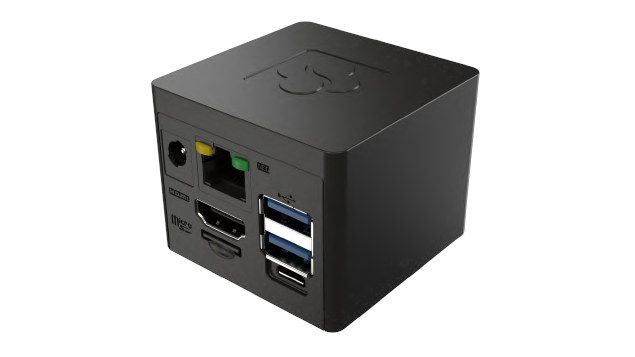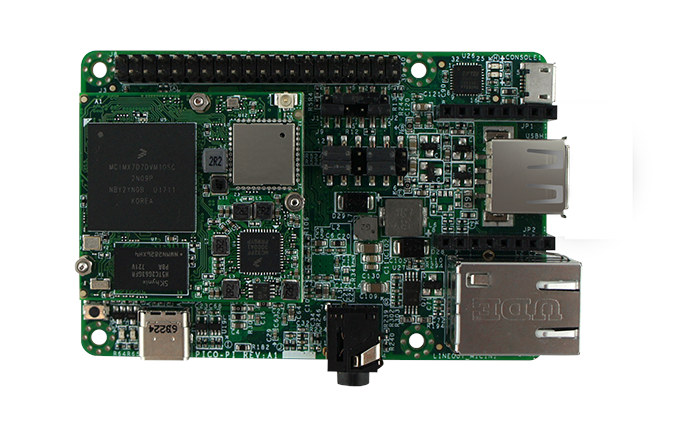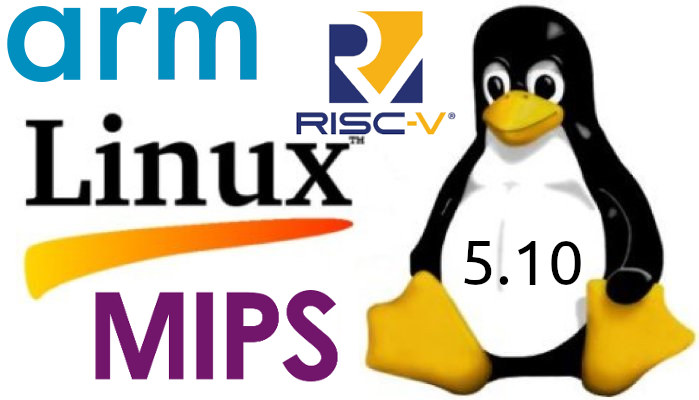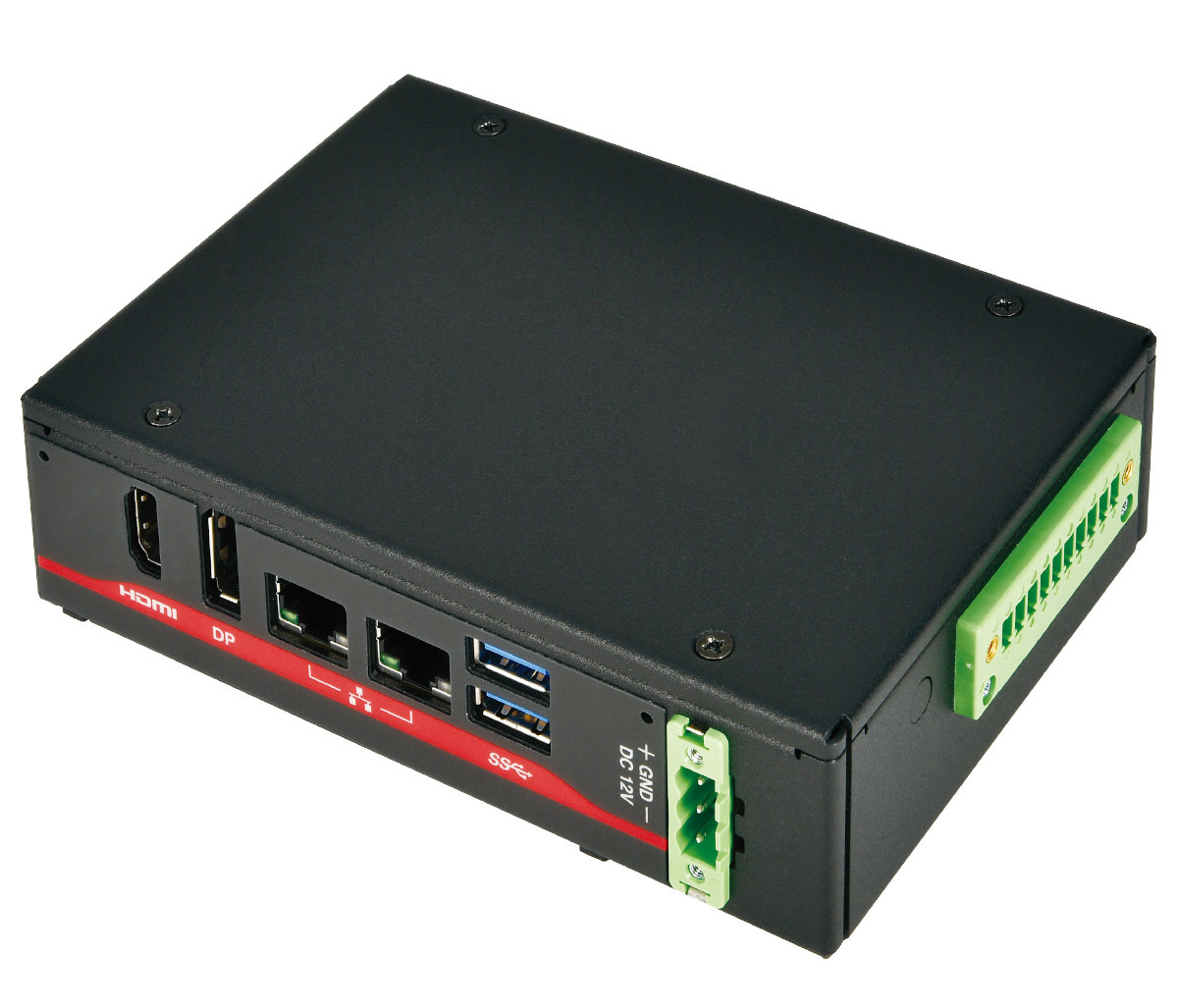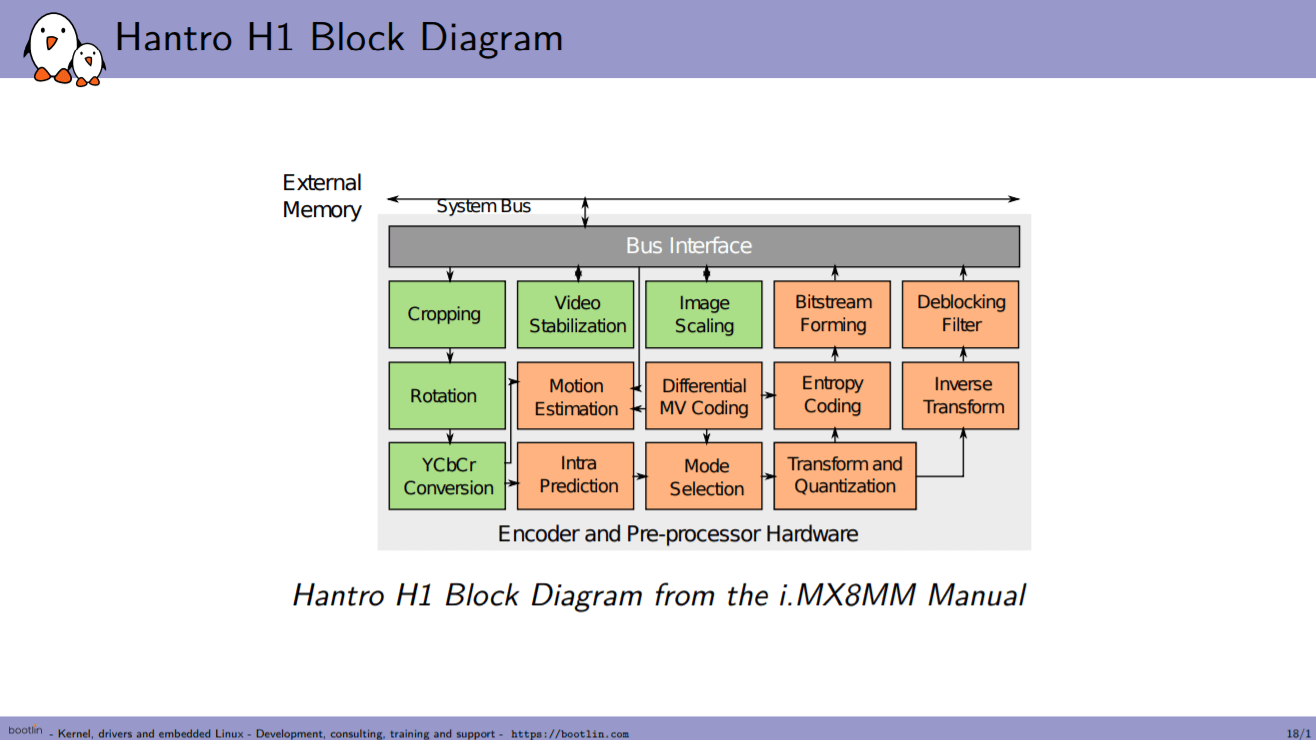Getting open-source multimedia drivers on Arm Linux is one of the most difficult tasks, that’s why there’s no much talk about open-source GPU drivers for 2D & 3D graphics acceleration, but work on video hardware decoding and encoding is also a challenge. We’ve previously seen Bootlin work on Cedrus open-source driver for Allwinner VPU (Video Processing Unit), but Collabora has been working on open-source drivers for VeriSilicon’s Hantro G1 and G2 VPU found in some Rockchip, NXP, and Microchip processors. The company previously managed to have Hantro G1 open-source driver for JPEG, MPEG-2, VP8, and H.264 codecs, but H.265/HEVC relies on Hantro G2, and the patch for H.265 hardware video decoding on NXP i.MX 8M Quad has just been submitted to mainline Linux. Benjamin Gaignard explains more in his commit message: The IMX8MQ got two VPUs but until now only G1 has been enabled This series aim to add the […]
MaaXBoard Nano SBC targets audio and edge IoT with NXP i.MX 8M Nano SoC
Avnet has launched several Raspberry Pi-inspired MaaXBoard SBCs based on NXP i.MX processors through their Embest subsidiary starting in 2019 with MaaXBoard single board computer powered by an NXP i.MX 8M processor, and following by MaaxBoard Mini with NXP i.NX 8M Mini SoC in 2020. The latest model is MaaXBoard Nano SBC with an NXP i.MX 8M Nano quad-core Cortex-A53 processor best suited to audio and edge IoT applications. MaaxBoard Nano SBC specifications: SoC – NXP i.MX 8M Nano quad-core Arm Arm Cortex-A53 processor @ up to 1.5GHz with Cortex-M7F core @ 750MHz, 2D GPU, 3D GPU, but no video hardware decoding. System Memory -1GB DDR4 SDRAM Storage – 16GB eMMC flash, 256 Mbit QSPI Flash, MicroSD Slot Display Interface – MIPI DSI display Interface Audio – 3.5mm audio jack, 4x built-in microphones Camera I/F – MIPI CSI Camera Interface Networking – Gigabit Ethernet, 802.11 b/g/n/ac WiFi 5, Bluetooth 4.2/5 […]
Linux 5.11 Release – Main Changes, Arm, MIPS & RISC-V Architectures
Linus Torvalds has released Linux 5.11 just in time for… “Valentine’s Day”: Nothing unexpected or particularly scary happened this week, so here we are – with 5.11 tagged and pushed out. In fact, it’s a smaller-than-average set of commits from rc7 to final, which makes me happy. And I already have several pull requests lined up for tomorrow, so we’re all set for the merge window to start. But in the meantime – and yes, I know it’s Valentine’s Day here in the US – maybe give this release a good testing before you go back and play with development kernels. All right? Because I’m sure your SO will understand. Linus Last time around, Linux 5.10 was an LTS release that added EXT-4 performance enhancements, improved post-Spectre performance, as well as the enablement of BCM2711 (Raspberry Pi 4) display pipeline, among other many changes. Some of the notable changes in […]
SolidRun CuBox-M 2-inch Arm Linux/Android mini PC packs a 2.3 TOPS AI accelerator
SolidRun first introduced the tiny CuBox Arm Linux mini PC in 2011, with the device based on a Marvell Armada 510 dual-core Armv7 processor, and followed in 2013 with the launch of the CuBox-i family powered by Freescale i.MX 6 single to quad-core Cortex-A9 processor. The company moved to NXP i.MX 8M processor in 2018 with the introduction of CuBox Pulse, and now they’ve introduced their first Cubox mini PC with a built-in AI accelerator. Meet CuBox-M mini PC powered by NXP i.MX 8M Plus quad-core Cortex-A53 processor with a 2.3 TOPS NPU. Cubox-M mini PC specifications: SolidRun i.MX 8M Plus System-on-Module (SoM) SoC – NXP i.MX 8M Plus Quad quad-core Arm Cortex-A53 processor @ 1.8 GHz with Arm Cortex-M7 up to 800MHz, Vivante GC7000UL 3G GPU (Vulkan, OpenGL ES 3.1, OpenCL 1.2), 2.3 TOPS NPU, 1080p60 H.264/H.265 video encoder, 1080p60 video decoder (H.265, H.264, VP9, VP8), Candence HiFi4 audio […]
PICO-PI-IMX7 NXP i.MX7 SBC offered for under $20 (Promo)
TechNexion PICO-Pi-IMX7 single board computer was introduced a few years ago with an NXP i.MX 7Solo or 7Dual Cortex-A7 Intel Edison compatible CPU module, in a form factor similar to Raspberry Pi 3, and supported by Android Things that was still a thing at the time… It looks like Arrow Electronics is trying to get rid of some stock, as the company is selling the Amazon version of the PICO-PI-IMX7 board for $19.58 including free shipping for ArrowPerks members, instead of the usual $120+ price tag. We had written about the PICO-iMX6 module and PICO-PI-iMX8 SBC previously, but never about the i.MX7 version, nor the PICO-PI-IMX7 board, so let’s have a closer look at what the board has to offer. PICO-Pi-IMX7 specifications: PICO-iMX7 system-on-module SoC – NXP i.MX 7Dual dual-core Cortex-A7 processor @ 1 GHz with Cortex-M4 real-time core System Memory – 512MB DDR3L Storage – 4GB eMMC flash Connectivity […]
Linux 5.10 LTS release – Main changes, Arm, MIPS and RISC-V architectures
Linus Torvalds has just released Linux 5.10: Ok, here it is – 5.10 is tagged and pushed out. I pretty much always wish that the last week was even calmer than it was, and that’s true here too. There’s a fair amount of fixes in here, including a few last-minute reverts for things that didn’t get fixed, but nothing makes me go “we need another week”. Things look fairly normal. It’s mostly drivers – as it should be – with a smattering of fixes all over: networking, architectures, filesystems, tooling.. The shortlog is appended, and scanning it gives a good idea of what kind of things are there. Nothing that looks scary: most of the patches are very small, and the biggest one is fixing pin mapping definitions for a pincontrol driver. This also obviously means that the merge window for 5.11 will start tomorrow. I already have a couple […]
Fanless Linux embedded system makes a compact IoT gateway
ICP Germany has recently introduced the MiTAC ME1-8MD series family of compact, fanless Linux embedded systems powered by NXP i.MX 8M processor and designed to be used as IoT gateways, data acquisition and processing systems, and mini servers. Three models have been launched with a choice of dual or quad-core processors, up to 4GB LPDDR4 RAM, and 32GB eMMC flash storage. The embedded computers also come with up to two Ethernet ports, support up to two displays, and include an internal Raspberry Pi compatible 40 pin GPIO header. MiTAC ME1-8MD specifications and key features: SoC – NXP i.MX 8M Dual or Quad with two or four Cortex-A53 @ 1.3GHz, Cortex-M4 MCU, Vivante GC7000 Lite GPU, and 4K video processing unit System Memory – 1 to 4GB LPDDR4 800 Mhz RAM Storage – 8, 16, or 32GB eMMC flash, 1x MicroSD card slot up to 256GB Video Output HDMI 2.0 Optional […]
Hantro H1 hardware accelerated video encoding support in mainline Linux
With the increasing need for video encoding, there are some breakthrough developments in hardware-accelerated video encoding for Linux. Bootlin has been working on the implementation of Hantro H1 hardware accelerated video encoding to support H.264 encoding on Linux which follows the company’s work on the previously-released open-source VPU driver for Allwinner processors. Hantro H1 Hardware Hantro H1 is a common hardware H.264 encoder, it can also do VP8 and JPEG. It is found in a few ARM SoCs including a lot of Rockchip (RK3288, RK3328, RK3399, PX30, RK1808) and NXP (i.MX 8M Mini). Depending on the version, it can support up to 1080p at 30 or 60 fps. Here we can see different blocks used for encoding. Hantro H1 is a stateless hardware implementation which means it has no microcontroller or firmware running. As can be seen in the diagram, it has a pre-processor that can do things like cropping, […]


